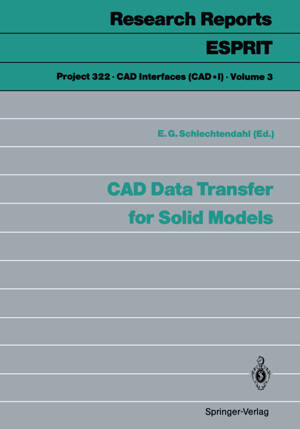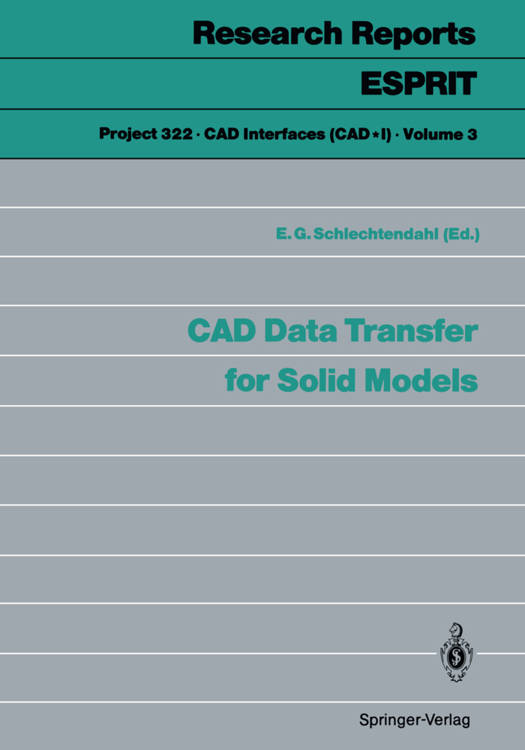
- Afhalen na 1 uur in een winkel met voorraad
- Gratis thuislevering in België vanaf € 30
- Ruim aanbod met 7 miljoen producten
- Afhalen na 1 uur in een winkel met voorraad
- Gratis thuislevering in België vanaf € 30
- Ruim aanbod met 7 miljoen producten
Zoeken
€ 105,45
+ 210 punten
Omschrijving
Principal authors: U. Kroszynski, B. Palstr9Sm 1.1 The evolution of concepts and specifications for CAD data exchange The CAD/CAM community has witnessed, during the last decade, the appearance of several specifications as well as proposals for standards which either attempt to cover wider areas or to be more reliable and stable than the others. With the rapid evolution of both hardware and software, the capabilities offered by CAD systems and CAD based application systems are far more advanced than they were only ten years ago, even when they are now based on micro-computers or personal comput- ers. The situation with standards, however, is not and cannot be so. In order to be reliable and accepted by a wide community of both vendors and users, a standard has to be sta- ble. This implies a life span of at least a decade. This also implies that the standard has to be general and flexible enough to accommodate present as well as expected future developments. 1.1.1 IGES The initial development of concepts for CAD data exchange is strongly influenced by the US Integrated Computer Aided Manufacturing (ICAM) programme, that dealt with the development of methods for data exchange. In September 1979, a subgroup was estab- lished with participation of the National Bureau of Standards, the General Electric Com- pany, and the Boeing Company. The result of this effort was the Initial Graphics Exchange Specification (IGES) that was published as a NBS report [61] in 1980.
Specificaties
Betrokkenen
- Auteur(s):
- Uitgeverij:
Inhoud
- Aantal bladzijden:
- 325
- Taal:
- Engels
- Reeks:
- Reeksnummer:
- nr. 3
Eigenschappen
- Productcode (EAN):
- 9783540518266
- Verschijningsdatum:
- 29/09/1989
- Uitvoering:
- Paperback
- Formaat:
- Trade paperback (VS)
- Afmetingen:
- 170 mm x 244 mm
- Gewicht:
- 548 g

Alleen bij Standaard Boekhandel
+ 210 punten op je klantenkaart van Standaard Boekhandel
Beoordelingen
We publiceren alleen reviews die voldoen aan de voorwaarden voor reviews. Bekijk onze voorwaarden voor reviews.











